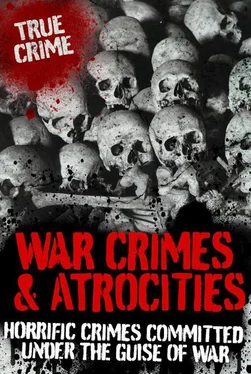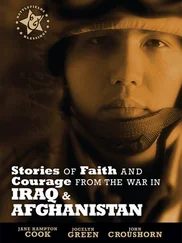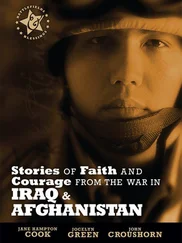It appears that two months earlier the same thing had happened to Salah Nasser Salim ’Ali and Muhammad Faraj Ahmed Bashmilah. All three men had entered the USA’s covert network of illegal detentions and had simply ‘disappeared’. The aim of the network is to try and collect as much information as they can through the use of long-term interrogation, without any judicial oversight. What is also worrying is the fact that is was a high-ranking official like an immigration officer who made the original arrest. This would suggest that the CIA are placing considerable reliance on foreign security and intelligence services to aid them in their rendition operations. The detainees are denied their legal right to speak to a lawyer, their families, doctors or even to be given a fair trial.
What these three cases have brought to light is the fact that the rendition system is not just for ‘high category’ detainees, and it is feared that the network is far more complex than originally believed. The three ordinary men mentioned here detained in at least four different secret locations, which were most likely to have been in different countries, judging by their descriptions of the length of their flights.
In September 2005, the Minister of the Interior Rashad Al-Alimi reported that the three men had been accused of being members of terrorist groups. They said their trial would commence as soon as they received the files from the CIA, but as yet no information has been forthcoming.
Muhammad Bashmilah stated, ‘If there are really charges we are ready to defend ourselves… we are Yemenis in Yemen, so why is the minister waiting for the Americans to decide?’
Following mounting investigation in Europe, it is believed that the US Senate will soon approve a rule that will necessitate the director of national intelligence to provide regular and detailed updates about any covert detention centres that are maintained by the USA overseas. This would also require an in-depth report on the treatment and condition in which the detainee is held.
EUROPE FIGHTS BACK
On 17 February, 2003, an Egyptian cleric by the name of Hassan Mustafa Osama Nasr (also known as Abu Omar) was allegedly abducted by the CIA as he walked to his mosque in Milan to take morning prayers. He had been living in asylum in Italy after his Islamic organization was declared illegal by the Egyptian government. Omar literally vanished off the face of the earth and nothing was heard of him until
13 months later, when he was able to make several phone calls to his friends and relatives. He claimed to have been abducted by US agents and taken to a joint US/Italian base, from where he was flown to Egypt. In Egypt he was subjected to aggressive torture tactics, such as beatings and electric shocks applied to his genitals. At the time of the phone calls, Omar had been released from detention on the orders of an Egyptian judge due to lack of evidence against him. However, a short while later he was again arrested and his whereabouts are no longer known.
Unhappy with the misuse of European soil during rendition operations, an Italian judge, Guido Salvini, issued a warrant for the arrest of 22 people believed to be agents or operatives of the CIA in June 2005. By November, the Justice Ministry in Italy requested for the extradition of the 22 suspects from the USA, and in December European arrest warrants were issued. These warrants were enforceable in all the 25 EU member countries and did not require the approval of any government.
The 22 agents have been accused of abducting Abu Omar without Italian permission and flying him to Egypt for interrogation. Italy claims that the abduction of Omar not only hampered their own investigations into Italian terrorism, but also violated Italian sovereignty. The arrests of these agents by Italy are part of a retaliation against the rendition policies used by the CIA. Many Italian citizens have voiced quite openly that they are not happy about the prospect of people being taken away from their own country to be tortured elsewhere. Sweden has also been looking into the activity of rendition, and Canada has set up hearings after one of its citizens was captured by US agents and flown to Syria for questioning without the knowledge of the Canadian government.
There is no doubt that the rendition controversy has damaged the United States’ working relationship with the EU in the war on terrorism. However, despite the fact that Europe’s governments have repeatedly denied their collaboration in the US programme of renditions, as evidence of the practice has come to light it has become clear that many European governments have adopted a ‘see no evil, hear no evil’ approach when it comes to rendition flights using their territory.
1998-99

Kosovo is a province in southern Serbia that borders Montenegro, Albania and the Republic of Macedonia. It has an ethnic population of about two million people, predominantly Albanians, with smaller proportions of Serbs, Turks and Bosniaks. The province has been under United Nations administration since 1999, and it has been the subject of long-running and territorial disputes between the Serbian government and Kosovo’s Albanian population.
In the late 1980s, a new, authoritarian leader emerged, a Serbian named Slobodan Milosevic. He was a former communist who had turned to nationalism and religious hatred in his efforts to gain power. As the Yugoslav federation started to collapse, Milosevic saw the opportunity to take control by inciting the long-standing tensions that were already present between the Serbs and Muslims in Kosovo. The Orthodox Christian Serbs, who were in the minority, claimed they were being downtrodden by the Albanian Muslim majority and Milosevic played on the dissent within the population. Under Josip Tito, the Muslims had enjoyed considerable independence, however, under the power of Milosevic, this autonomy would soon be taken away.
THE START OF ETHNIC CLEANSING
In 1989, Milosevic closed down the regional assembly and government and imposed a police state on Kosovo. Tens of thousands of Albanians lost their positions in government and private institutions alike, and Serbs were put in their place. Milosevic, who was trying to ethnically ‘cleanse’ the province, encouraged the migration of young Albanian men. Fearing for their own safety and now finding it difficult to earn a living, this is exactly what happened. Literally hundreds of thousands of Albanians fled Kosovo for Western Europe and North America, which created one of the largest migrant communities in the world.
Back in Kosovo, conditions for the remaining Albanians deteriorated as they were the subject of constant surveillance and harassment. Dr Julie Mertus, who was a member of Human Rights Watch, later reported that between the years 1989 and 1997, almost half the adult Albanian population in Kosovo was either arrested, interrogated, interned or remanded for no particular reason other than the fact they were not Serbs.
After nearly a decade of repression, the Albanians were no longer prepared to take a back seat and in 1966 they formed the Kosovo Liberation Army (KLA). The KLA started off as a small guerilla organization that fought for independence from Serbian rule. Their initial attacks were aimed at the Serbian police, government officials and refugee centres in western Kosovo. Their aim was to provoke an open conflict in which they believed the West would be forced to intervene. Milosevic seized the opportunity and his regime started to plan a way of ridding Kosovo of Albanian culture once and for all – by acts of genocide.
Читать дальше













